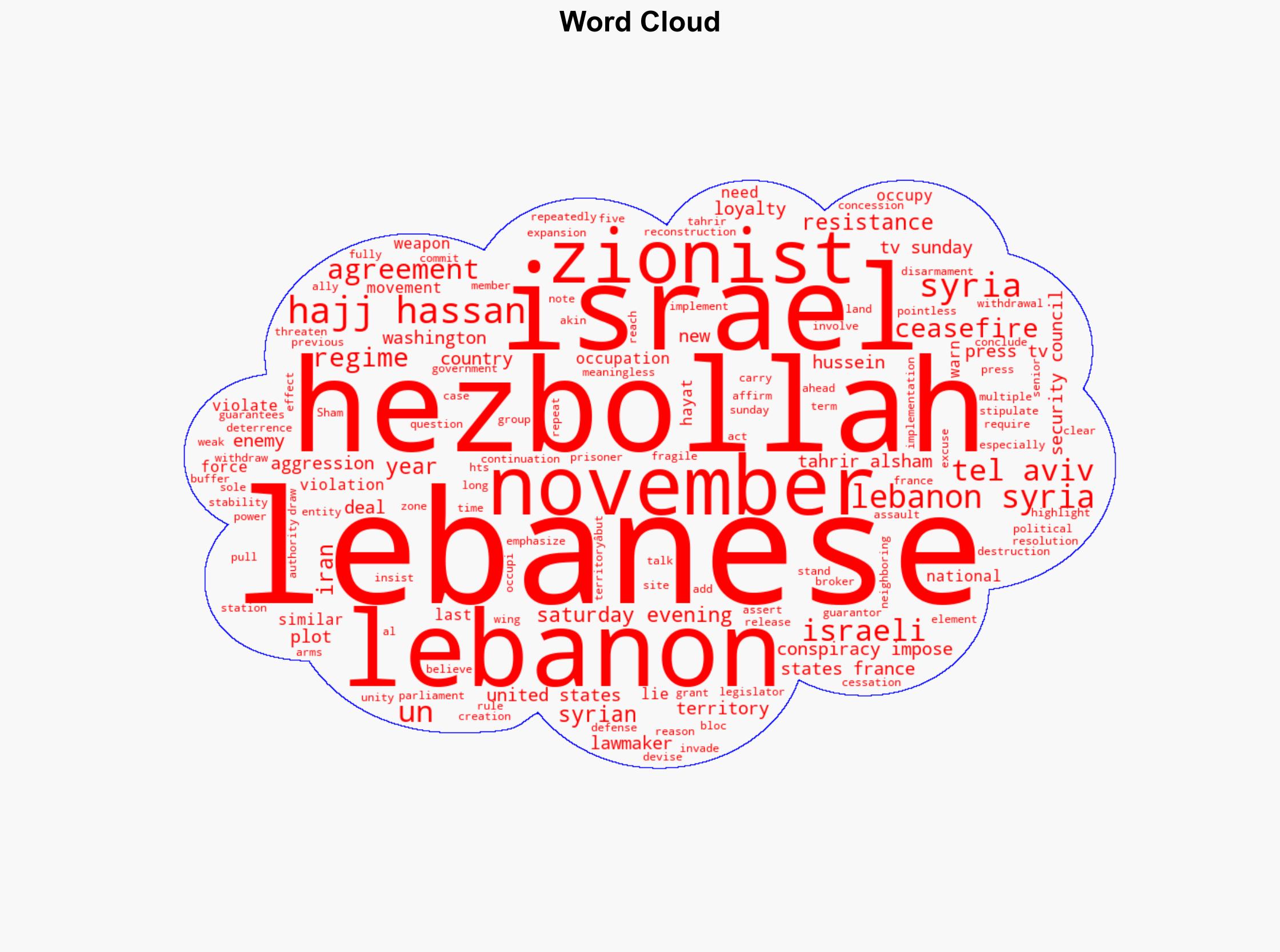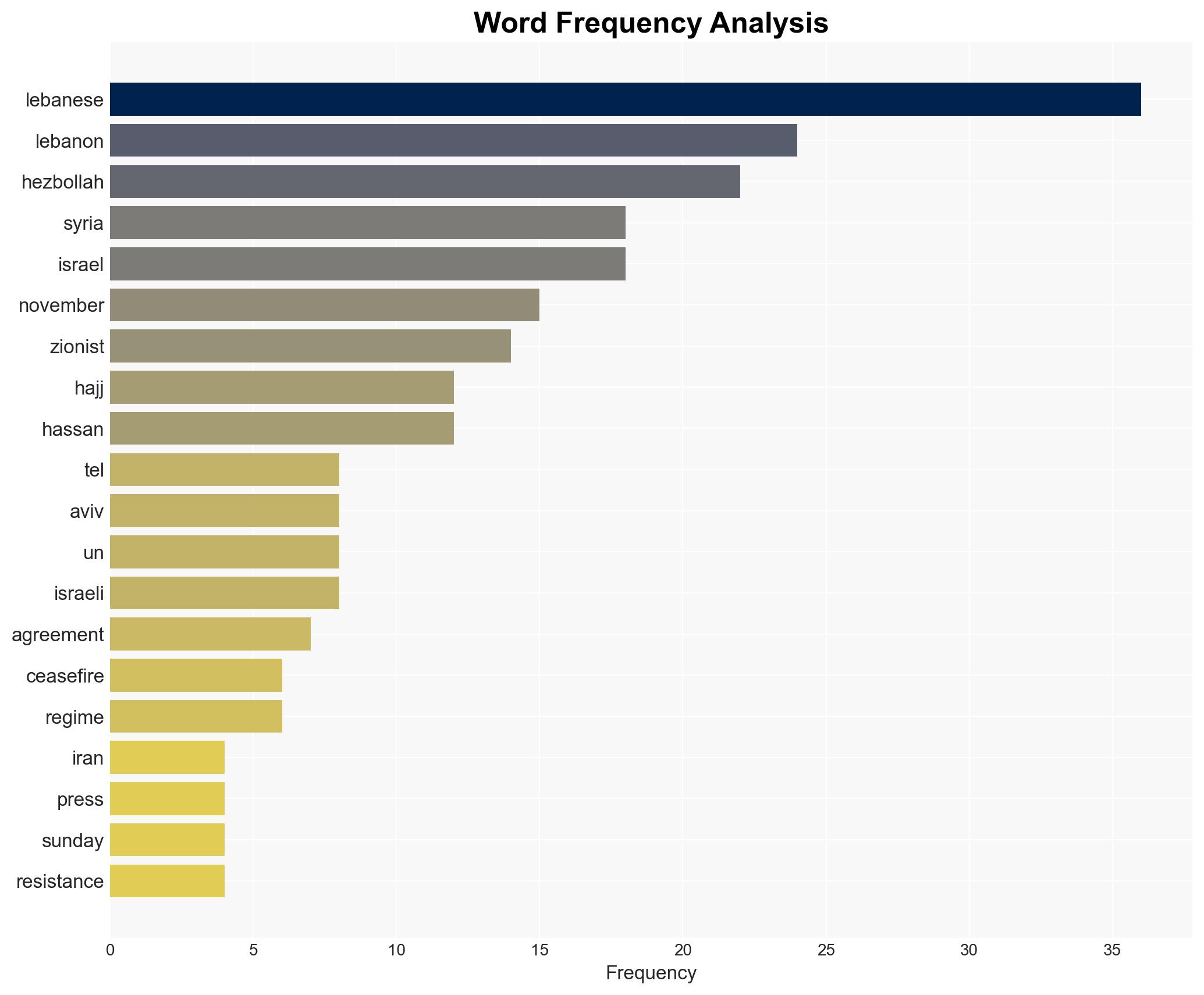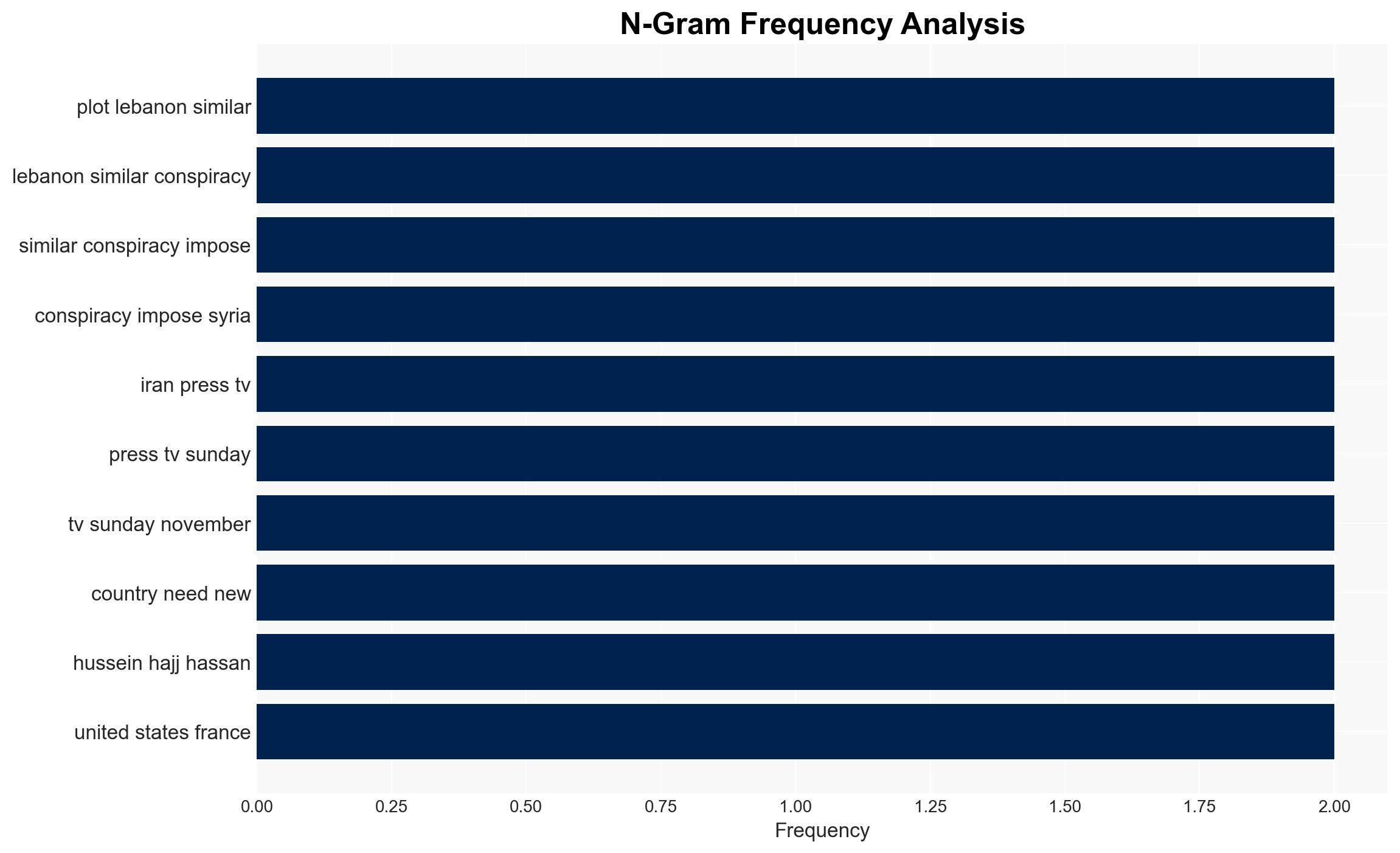Enemy plot against Lebanon similar to conspiracy imposed on Syria says lawmaker – Globalsecurity.org
Published on: 2025-11-17
AI-powered OSINT brief from verified open sources. Automated NLP signal extraction with human verification. See our Methodology and Why WorldWideWatchers.
Intelligence Report:
1. BLUF (Bottom Line Up Front)
The most supported hypothesis is that the alleged plot against Lebanon is a strategic narrative by Hezbollah to consolidate internal support and deter external aggression. Confidence level is moderate due to limited corroborative evidence and potential bias in the source. Recommended action is to enhance intelligence collection on regional military movements and diplomatic communications to verify claims and assess intentions.
2. Competing Hypotheses
Hypothesis 1: The claim of an enemy plot against Lebanon is a strategic narrative by Hezbollah to consolidate internal support and deter external aggression. This hypothesis is supported by Hezbollah’s historical use of external threats to justify its military posture and political influence within Lebanon.
Hypothesis 2: There is an actual coordinated effort by external actors, potentially involving Israel and its allies, to destabilize Lebanon similar to past strategies used in Syria. This hypothesis is less supported due to the lack of independent verification and the potential bias of the source, Press TV, known for its alignment with Iranian and Hezbollah perspectives.
3. Key Assumptions and Red Flags
Assumptions: The analysis assumes that Hezbollah’s statements are primarily aimed at domestic audiences and that regional powers have a vested interest in Lebanon’s stability.
Red Flags: The source of the information, Press TV, may exhibit bias, and the narrative aligns with Hezbollah’s interests, suggesting potential propaganda. The lack of independent verification raises questions about the credibility of the claims.
4. Implications and Strategic Risks
The allegations, if believed, could exacerbate tensions between Lebanon and Israel, potentially leading to military skirmishes. Politically, it may strengthen Hezbollah’s position domestically but could also lead to increased international scrutiny and pressure. Economically, heightened tensions could deter investment and exacerbate Lebanon’s financial crisis. Information-wise, the narrative could polarize public opinion and influence regional alliances.
5. Recommendations and Outlook
- Enhance intelligence collection on military movements and diplomatic communications in the region to verify claims.
- Engage in diplomatic dialogues with regional stakeholders to de-escalate tensions and promote stability.
- Monitor media narratives and public sentiment to assess the impact of the allegations on domestic and regional stability.
- Best-case scenario: The allegations are unfounded, and diplomatic efforts lead to a de-escalation of tensions.
- Worst-case scenario: The allegations lead to military conflict, further destabilizing Lebanon and the region.
- Most-likely scenario: The narrative serves as a deterrent without leading to immediate conflict, but tensions remain high.
6. Key Individuals and Entities
Hussein Hajj Hassan, a member of the Loyalty to the Resistance Bloc, is a key figure in articulating the narrative. Hezbollah and the Israeli government are the primary entities involved.
7. Thematic Tags
Counter-Terrorism, Regional Stability, Propaganda, Military Strategy
Structured Analytic Techniques Applied
- ACH 2.0: Reconstruct likely threat actor intentions via hypothesis testing and structured refutation.
- Indicators Development: Track radicalization signals and propaganda patterns to anticipate operational planning.
- Narrative Pattern Analysis: Analyze spread/adaptation of ideological narratives for recruitment/incitement signals.
Explore more:
Counter-Terrorism Briefs ·
Daily Summary ·
Support us
·





